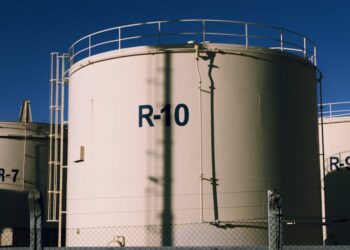Change is a constant in the business world, and for Duke Energy, one of the largest energy companies in the United States, change often means reshaping its workforce. As the company transitions towards a future of clean energy, recent layoffs have become an unfortunate yet strategic decision. These layoffs reflect not only Duke Energy’s internal goals but also broader shifts within the energy industry. In this article, we will explore the recent and past layoffs at Duke Energy, understanding the motivations behind them, and examining whether they are part of a bigger trend in the energy sector. Through this analysis, we’ll also delve into Duke Energy’s business model and financial performance to provide a comprehensive view of the company’s strategies.
A Brief Look at Duke Energy
Duke Energy, headquartered in Charlotte, North Carolina, stands among the largest and most influential energy companies in the United States. With a history extending over a century, Duke Energy provides electricity to millions of customers, maintaining a strong presence across the Southeast and Midwest regions. The company’s broad energy portfolio includes coal, natural gas, nuclear power, and an increasing emphasis on renewable sources like solar and wind.
This blend of energy sources positions Duke Energy as a pivotal player in America’s energy transition. Over the years, the company has made significant strides towards adopting clean energy solutions, including net-zero methane emissions for its natural gas business by 2030 and a complete exit from coal by 2035. However, this transition has necessitated a series of strategic realignments, including workforce changes, as the company seeks to remain efficient and competitive.
Duke Energy Layoffs 2025
The year 2025 is anticipated to bring another wave of adjustments at Duke Energy as the company continues its reorganization efforts. While specific details regarding layoffs in 2025 are presently limited, it’s likely that Duke Energy will persist in optimizing its workforce to better align with its clean energy goals. Such future adjustments will likely reflect ongoing efforts to streamline operations, reduce costs, and invest in new energy technologies.
As Duke Energy plans to invest approximately $145 billion over the next decade to bolster its infrastructure, workforce realignments may become a recurrent theme. This capital allocation aims to extend the life of the company’s nuclear fleet and explore innovative technologies, ensuring its capability to meet the evolving demands of the energy market.
A Detailed Analysis of Duke Energy 2024 Layoffs
In January 2024, Duke Energy confirmed a “limited” number of layoffs as part of its continued reorganization focused on clean energy. While the exact number of employees affected wasn’t disclosed, this move is part of a larger transformative expansion and modernization of energy generation and grids. By enhancing efficiency and cost-effectiveness, the company hopes to align its operations with its long-term sustainability objectives.
These 2024 layoffs, although limited, stirred discussions across the industry. Employees from various departments, including operations and management, found themselves reevaluating their positions as Duke Energy shifted its focus. The decision reflects the company’s ongoing struggle to balance workforce size with the need for innovation and growth in clean energy arenas.
Key Points Behind These Layoffs
Understanding the key factors behind these layoffs provides insight into Duke Energy’s larger strategy:
Clean Energy Commitment: Duke Energy’s ambition to achieve net-zero methane emissions and eliminate coal reliance is a primary driver behind these workforce changes. Moving towards renewables necessitates new skill sets and technology investments, prompting personnel shifts.
Efficiency and Cost Reduction: The layoffs are crucial to Duke Energy’s cost-saving measures. Streamlining its operations allows the company to reallocate resources to more crucial areas as it adopts a hybrid workplace model and reduces its office footprint.
Regulatory and Market Adaptations: Changes in regulatory policies and market conditions compel Duke Energy to adapt swiftly, necessitating continual workforce adjustments to stay ahead in the competitive energy sector.
Are Layoffs Part of a Bigger Industry Trend?
Duke Energy’s layoffs are not isolated instances; they reflect a broader trend affecting the global energy industry. As companies transition towards sustainable energy solutions, they often face the challenge of adapting their workforce to align with new technological demands. This shift not only involves layoffs but also entails hiring skilled personnel adept in modern clean energy technologies.
Globally, energy companies are investing heavily in renewables, responding to climate change imperatives and consumer demand for cleaner energy. As a result, workforce strategies are evolving, with companies emphasizing adaptability and innovation. This industry-wide transition underscores the necessity for continual learning and re-skilling among employees, preparing them for the future of work in the evolving energy landscape.
Duke Energy Business Model
Duke Energy’s business model is grounded in offering reliable and sustainable energy solutions to its vast customer base. The company operates primarily across three segments: electric utilities and infrastructure, gas utilities and infrastructure, and commercial renewables. This diverse portfolio enables Duke Energy to manage risks effectively while investing in growth opportunities.
Over the years, Duke Energy has consistently emphasized modernizing its infrastructure and expanding into renewable energy sources. By investing in new technologies and exploring advanced nuclear and hydrogen-enabled solutions, the company aims to lead in the clean energy sector. This strategic direction ensures that Duke Energy remains resilient and adaptable, meeting the challenges and opportunities of an increasingly eco-conscious world.
Financial Performance of Duke Energy
Duke Energy’s financial performance plays a significant role in shaping its strategic direction. The company’s financial health supports its ability to make bold investments in infrastructure and clean energy technologies. In recent years, Duke Energy has shown stable revenue streams, bolstered by a diversified energy portfolio and strategic cost management initiatives.
Efforts to improve operational efficiency and cost-effectiveness have contributed positively to the company’s bottom line. These financial strategies, coupled with a commitment to sustainable growth, enable Duke Energy to pursue ambitious projects such as expanding its renewable energy capacity. This financial resilience acts as a cornerstone, allowing Duke Energy to continue its transition towards a more sustainable future.
Conclusion
Duke Energy’s recent and anticipated layoffs are indicative of the company’s ongoing efforts to align its workforce and operations with its long-term clean energy goals. These changes, while challenging, are a necessary part of Duke Energy’s strategy to remain competitive and resilient in a rapidly transforming industry. As the company continues investing in innovative technologies and sustainable solutions, it faces the crucial task of balancing workforce efficiency with its ambitious environmental commitments. For more great insights into the business world, visit our site.
In the broader context, Duke Energy’s actions reflect wider trends within the energy sector as companies globally strive to meet the evolving demands for cleaner, more sustainable energy. These transitions underscore the need for continuous innovation, adaptability, and resilience, ensuring that both Duke Energy and the broader industry can meet future environmental and consumer challenges head-on.












